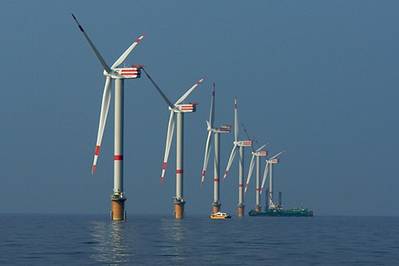ABB Commissions North Sea Wind Energy Link
ABB commissions Thornton Bank wind farm connection in the North Sea which will see 325 megawatts of clean wind energy integrated into the Belgian grid. The project was completed ahead of schedule.
The Thornton Bank wind farm was inaugurated by the Belgian Prime Minister Elio Di Rupo, adding more than 1,000 gigawatt-hours (GWh) of electricity generation capacity per year to the Belgian grid. This is the equivalent to the annual power consumption of about 300,000 households in Belgium. The wind farm will contribute approximately 7 percent of Belgium’s targeted renewable energy commitment by 2020 and help avoid CO2 emissions of approximately 415,000 tons per year if the electricity were to be generated by a traditional gas-fueled power plant.
This is now one of the largest offshore wind farms in Europe, with an overall capacity of 325 MW. A submarine cable system comprises 60 km of 36 kilovolt (kV) infield cables link the turbines to a substation close to the turbines offshore. The substation collects and transmits the power to the coast. It is a large four-deck structure weighing some 2,000 tons. It comprises two power transformers, gas-insulated switchgear for incoming and outgoing current, shunt reactors to provide reactive power compensation, neutral grounding reactors to limit the current in case of a fault, and substation protection and control systems.
The project began in 2008, with phase one in which six turbines with a total capacity of 30 megawatt (MW) were installed 30 kilometers (km) off the Belgian coast. By 2009, these turbines were generating electricity and had been temporarily connected to the mainland by ABB. Work then began on the second and third phases of the project, which involved the addition of 48 wind turbines to the wind farm and the permanent connection of the complete wind farm to the mainland. This was done via an alternating current (AC) subsea transmission link. ABB commissioned the project ahead of schedule.
The wind turbines deliver 33 kV, which is stepped up by the transformers to 150 kV. Two 170 kV export cables transfer the power from the substation to shore. At the onshore cable landing point the export cables are joined to two 170 kV underground cables, which deliver the power to the Slijkens substation, about 3 km inland. At Slijkens the electricity joins the Belgian grid.














